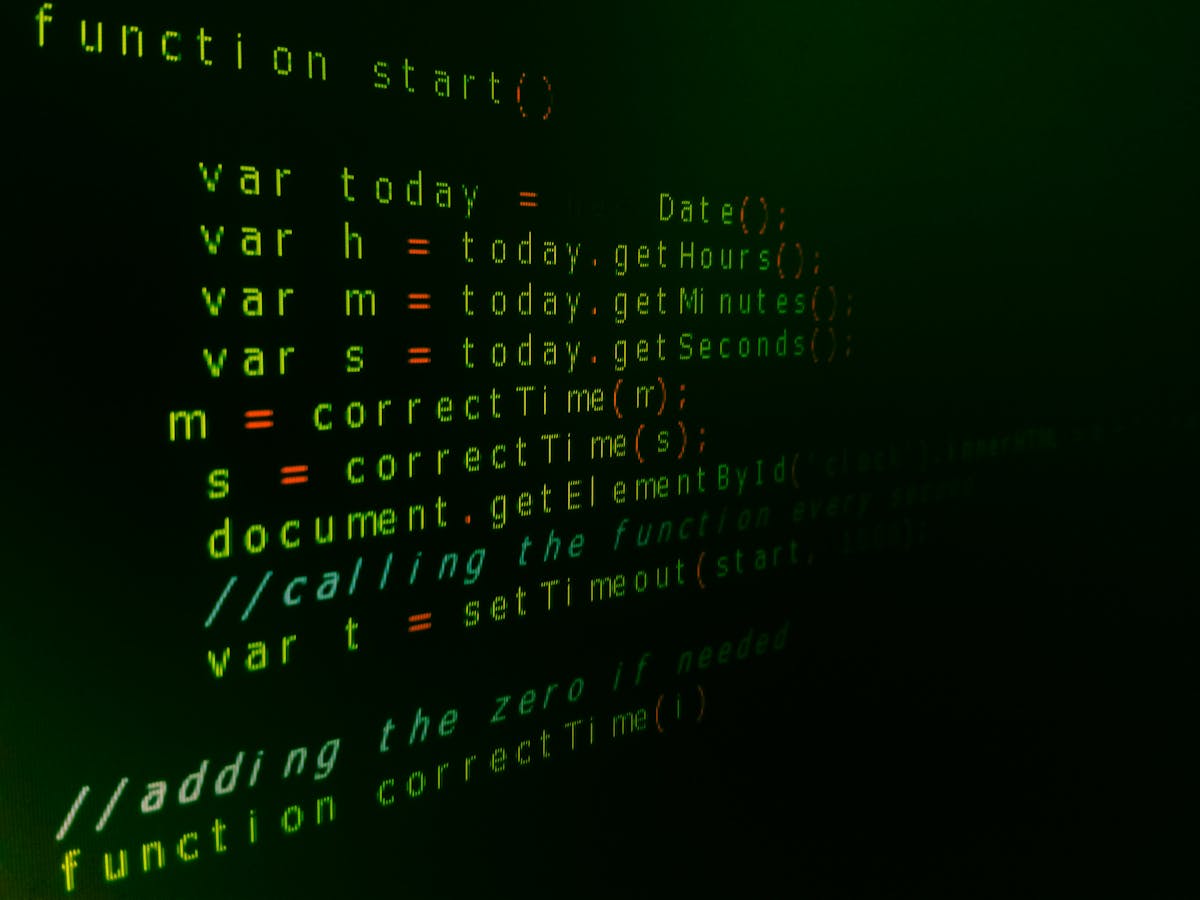Code Automation Tools that niels denekamp aether Trusts for Full-Stack Success
Understanding Full-Stack Growth: Why It Is Essential for Modern Software Design
Full-stack advancement has become a crucial component of modern-day software program engineering. It envelops the capability to navigate both front-end and back-end technologies. This twin proficiency enhances cooperation within groups and improves task process (aether group dubai). As organizations look for performance and innovation, the function of full-stack designers becomes increasingly crucial. What certain abilities and tools do these designers require to flourish in a swiftly progressing landscape?

The Duty of Full-Stack Developers in Software Projects
Although the landscape of software advancement varies, full-stack developers play a necessary duty by connecting the space in between front-end and back-end technologies. These specialists have a wide capability that enables them to deal with all layers of an application, from interface to server-side logic. Their versatility enables them to comprehend and apply both client-side frameworks and server-side programming languages, assisting in smoother interaction amongst group members.In software application projects, full-stack designers are capable of dealing with different jobs, such as creating data sources, creating APIs, and enhancing individual experiences. This diverse competence allows them to recognize and deal with issues across the entire stack, ensuring a natural and reliable growth procedure. In addition, their ability to recognize the complete architecture of a project cultivates cutting-edge options that can boost functionality. Ultimately, full-stack designers are invaluable assets, driving tasks ahead by integrating diverse technologies seamlessly.
Advantages of Full-Stack Growth for Teams and Organizations
Full-stack growth uses considerable advantages for teams and organizations by promoting higher partnership and effectiveness. By enabling programmers to function across both front-end and back-end technologies, full-stack development minimizes communication obstacles between staff member. This flexibility enables smoother task changes and quicker problem resolution, as programmers have an alternative understanding of the entire application.Moreover, full-stack programmers can add to various phases of the growth procedure, causing optimized resource allocation and lowered reliance on numerous specialists. This versatility can accelerate task timelines, ultimately improving performance. Furthermore, companies benefit from a much more natural team dynamic, as full-stack developers can assist in knowledge sharing and mentorship, promoting a society of constant understanding.
Necessary Skills for Aspiring Full-Stack Developers
To do well in full-stack advancement, striving programmers must grow a varied collection of skills that cover both front-end and back-end innovations. Effectiveness in HTML, CSS, and JavaScript is fundamental for crafting appealing interface. Comprehending frameworks such as React or Angular enhances their ability to construct vibrant applications. On the back end, experience with server-side languages like Node.js, Python, or Ruby is essential, in addition to understanding of database administration utilizing SQL or NoSQL systems.Additionally, aiming full-stack developers ought to comprehend variation control systems, specifically Git, to properly manage code adjustments. They must also value Relaxing APIs and exactly how to integrate them into applications. Familiarity with receptive design concepts guarantees use across tools. Finally, strong analytical abilities and a solid understanding of software application development methods are critical for navigating complicated jobs. By grasping these skills, aspiring designers place themselves for success in the affordable landscape of full-stack advancement.
Tools and Technologies in Full-Stack Advancement
A variety of devices and technologies play vital see this here functions in the full-stack advancement procedure. Front-end advancement normally includes frameworks such as React, Angular, or Vue.js, which make it possible for programmers to develop dynamic customer interfaces. For styling, CSS preprocessors like SASS and tools like Bootstrap streamline the layout procedure. On the backside, modern technologies like Node.js, Python with Django, or Ruby on Rails are frequently used to deal with server-side logic. Data sources, including SQL (MySQL, PostgreSQL) and NoSQL (MongoDB), are critical for data storage and retrieval.Additionally, variation control systems, considerably Git, are vital for partnership and managing code modifications. Developers typically leverage cloud solutions such as AWS or Azure to release applications, making sure scalability and reliability. Constant assimilation and implementation (CI/CD) tools better enhance the growth workflow by automating screening and deployment procedures. Jointly, these tools allow full-stack developers to construct efficient, contemporary applications that fulfill varied customer needs.

Future Fads in Full-Stack Advancement and Its Influence On the Market
As the her explanation technology landscape advances, trends in full-stack growth are progressively shaping the future of the sector. One significant pattern is the expanding adoption of low-code and no-code platforms, which empower non-developers and developers alike to build applications with marginal coding experience. This democratization of development speeds up task timelines and promotes innovation.Additionally, the rise of microservices design permits even more modular and scalable applications, enhancing cooperation amongst teams and enhancing deployment processes (niels denekamp).Furthermore, the assimilation of synthetic intelligence and device knowing into full-stack advancement devices is enhancing workflows, enabling designers to concentrate on intricate jobs while automating repetitive functions.Lastly, with the enhancing emphasis on remote work, a shift towards cloud-based growth environments is expected, allowing worldwide partnership and adaptability. These fads jointly show a future where full-stack development ends up being a lot more effective, obtainable, and integral to the tech industry's evolution
Regularly Asked Inquiries
What Is the Typical Wage of a Full-Stack Programmer?
The typical income of a full-stack developer differs considerably based upon company, area, and experience dimension. Typically, it ranges from $70,000 to over $120,000 annually, reflecting the need for flexible modern technology professionals in today's market.
For how long Does It Take to Become a Full-Stack Designer?
The time required to come to be a full-stack designer varies widely (niels denekamp linkmedia). Usually, individuals might take six months to 2 years, relying on prior experience, devotion, and the complexity of the technologies they select to learn
Do Full-Stack Developers Work Better in Teams or Independently?
The efficiency of full-stack developers differs; some thrive in collaborative group atmospheres, leveraging varied abilities, while others excel separately, demonstrating self-sufficiency. Inevitably, their performance relies on individual choices and job requirements.
What Industries Employ Full-Stack Developers one of the most?
Different markets proactively seek full-stack programmers, with technology, healthcare, money, and e-commerce blazing a trail. These fields value their adaptability, allowing them to efficiently manage both front-end and back-end growth tasks within check it out projects.
Are Full-Stack Developers in High Demand Globally?
Full-stack programmers are undoubtedly in high need worldwide, as their flexible ability set enables them to navigate both back-end and front-end modern technologies, making them important properties to companies looking for dexterous and reliable software application growth remedies. The landscape of software program growth is varied, full-stack programmers play an essential role by bridging the gap between front-end and back-end technologies. Their adaptability allows them to comprehend and execute both client-side structures and server-side programming languages, helping with smoother communication among group members.In software projects, full-stack developers are qualified of taking care of numerous jobs, such as designing data sources, developing APIs, and enhancing individual experiences. By allowing designers to work across both front-end and back-end technologies, full-stack growth reduces interaction barriers between team participants. To prosper in full-stack advancement, aiming designers should cultivate a diverse collection of abilities that cover both front-end and back-end innovations. Various sectors proactively look for full-stack developers, with innovation, medical care, financing, and e-commerce leading the means.